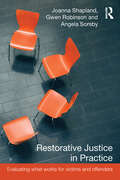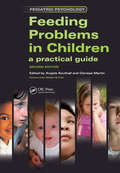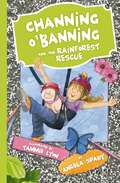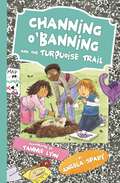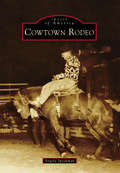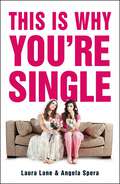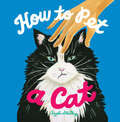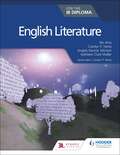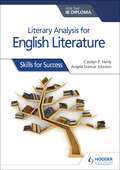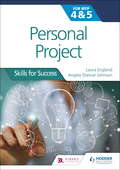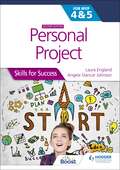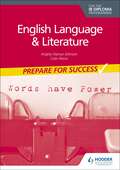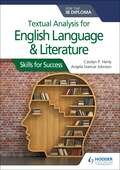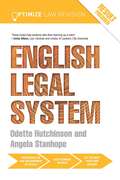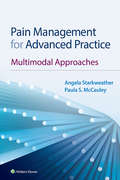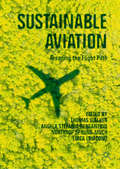- Table View
- List View
Restorative Justice in Practice: Evaluating What Works for Victims and Offenders
by Gwen Robinson Joanna Shapland Angela SorsbyRestorative justice has made significant progress in recent years and now plays an increasingly important role in and alongside the criminal justice systems of a number of countries in different parts of the world. In many cases, however, successes and failures, strengths and weaknesses have not been evaluated sufficiently systematically and comprehensively, and it has been difficult to gain an accurate picture of its implementation and the lessons to be drawn from this.Restorative Justice in Practice addresses this need, analyzing the results of the implementation of three restorative justice schemes in England and Wales in the largest and most complete trial of restorative justice with adult offenders worldwide. It aims to bring out the practicalities of setting up and running restorative justice schemes in connection with criminal justice, the costs of doing so and the key professional and ethical issues involved.At the same time the book situates these findings within the growing international academic and policy debates about restorative justice, addressing a number of key issues for criminal justice and penology, including: how far victim expectations of justice are and can be met by restorative justice aligned with criminal justice whether ‘community’ is involved in restorative justice for adult offenders and how this relates to social capital how far restorative justice events relate to processes of desistance (giving up crime), promote reductions in reoffending and link to resettlement what stages of criminal justice may be most suitable for restorative justice and how this relates to victim and offender needs the usefulness of conferencing and mediation as forms of restorative justice with adults. Restorative Justice in Practice will be essential reading for both students and practitioners, and a key contribution to the restorative justice debate.
Feeding Problems in Children: A Practical Guide, Second Edition (Radcliffe Ser.)
by Clarissa Martin Angela SouthallFeeding problems in children are relatively common, and often resolve themselves with little need for intervention. However, some categories of feeding problem are severe, persistent, and may be life-threatening without skilled involvement by professionals, including medical and surgical intervention. This revised and expanded Second Edition of Feeding Problems in Children deals with these severe and persistent problems, summarising the different kinds of work undertaken with children and their families in a number of countries. It first discusses the theoretical frameworks and perspectives, before moving on to explore clinical and applied research aspects of children's feeding. Finally, a comprehensive Clinical Practice Toolkit has been added to this edition, providing clinical models, checklists, model forms and reports. Featuring contributions from well-known international experts in the field, comprehensive and fully referenced, this book continues to be essential reading for all those practising or training in paediatrics in primary or secondary care, including paediatricians, GPs, gastroenterologists, psychologists, psychiatrists, therapists, paediatric nurses, health visitors and allied health professionals. 'Given the multi-cultural composition of today's communities, the decision by Drs Southall and Martin to include a chapter on cultural aspects to feeding was most insightful. This book, with its comprehensive coverage of the issues and a practical Toolkit with examples of materials from a multi-disciplinary practice, makes an essential contribution to the education of frontline clinicians dealing with feeding problems in young children.' - from the Foreword by William B Crist From reviews of the First Edition: 'A detailed guide, extensively referenced' FAMILY MEDICINE 'A useful addition to a hospital library or multi-disciplinary paediatric library' PHYSIOTHERAPY JOURNAL
Channing O'Banning and the Rainforest Rescue (Channing O'Banning)
by Angela SpadyWhat Happens When Your Least Favorite Person Is Your Only Hope for Rescue? When Channing O'Banning's BFF goes gaga over new boy Marco, Channing wishes she could send him back to where he came from. Her wish turns into her worst nightmare when Marco tags along on her family's dream trip to Marco's home country of Costa Rica. With her secret sketchbook in tow, a colored pencil stuck in her ponytail, and adorable pot-bellied pig, Teeny, by her side, Channing embarks on a high-flying adventure through the Costa Rican rainforest. But when the feisty fourth-grade artist makes a few wrong turns and gets lost in the jungle, she discovers that maybe Marco isn't so bad after all. Through her wild escapades, Channing learns just how important it is to keep the earth--and friendships--healthy.at lives in South American rainforests. Chan is determined that she will someday capture the bird in her sketchbook.By a weird twist of fate, Channing's family takes a trip to Costa Rica with Marco's family. Determined to not let Marco ruin her trip, Chan sets off to find the quetzal, but she discovers more than she bargained for: first impressions aren't always correct, and it's so important not to judge others.Trim Size: 5.25 x 8
Channing O'Banning and the Turquoise Trail (Channing O'Banning)
by Angela SpadyHigh-Flying Adventure to the Wild West When fourth-grade artist Channing O'Banning unearths something very weird on the school playground, she's sure it's going to be the biggest thing ever to happen at Greenville Elementary. But things take a rocky turn, and Channing never wants to show her face at school again. Thankfully, Channing finds lots of rocks to hide under when her family visits the American West. With her signature colored pencil stuck in her ponytail and Teeny, the coolest pig on the planet, by her side, Channing discovers that art comes in many different forms--and that God is the greatest artist of all.borrow her super-cool Navajo turquoise ring, Channing is over the moon--until she loses the ring. As Chan searches for Nana's ring, hilarious antics ensue, but in the midst of the craziness, Channing learns a new perspective on history, friendship, and, especially, the importance of responsibility. Trim Size: 5.25 x 8
Cowtown Rodeo (Images of America)
by Angela SpeakmanAn enormous red cow and a 20-foot-tall cowboy have long welcomed all who arrive at the Cowtown Rodeo and Flea Market. In the 1920s, Amos Howard Harris was auctioning automobiles in a livestock town. Realizing he needed to appeal to the locals, he and his son began hosting weekly livestock auctions and inviting local merchants to attend and sell their goods. The idea was a success. In 1929, the Harris family and Cowtown helped revive the local annual fair and rodeo, which continued to exist until World War II. With the popularity of the auction and the growth of the midway market, the operation moved to a larger location in 1940. Then, 15 years later, Cowtown hosted its first full rodeo season. Today, it is the longest continually running weekly professional rodeo in the country. It remains a Harris family business and a South Jersey tradition, attracting visitors from around the world.
This Is Why You're Single
by Laura Lane Angela SperaWhether you're falling for that man child for the fifty-seventh time or text messaging your way to stalker status, dating can make you want to find a nice roomy hermitage on Airbnb and live a solitary, monk-like life.Luckily, that frustration ends now.This Is Why You're Single breaks away from your typical dating guide by taking a page from Aesop's playbook with hilarious modern-day dating fables paired with advice, entertaining quizzes, graphs, and illustrations. Dating will feel a whole lot more doable, a little less weird, and, well, actually pretty fun.
Happy Houseplants: 30 Lovely Varieties to Brighten Up Your Home
by Angela StaehlingEnhance your home décor with this guide to choosing and caring for indoor plants, with information on thirty common, easy-to-grow varieties. For anyone who has longed for a garden of their own—whether a city dweller or one with less-than-green thumbs—this is a handy little guide to growing and maintaining houseplants. Cheerful and informative, Happy Houseplants will guide any budding indoor botanist through a bevy of topics, from soil and water to light and fertilizer. With beautiful illustrations accompanying thirty different profiles of plants, from the easygoing Air Plant to the striking Zebra Cactus, this nifty book is the perfect gift for anyone looking to bring a piece of the outdoors inside.
How to Pet a Cat
by Angela StaehlingKeep your cat happy and pet them right with this cute and handy illustrated guide!Cats have quite a few opinions, but with easy-to-follow instructions and helpful diagrams, this book will teach you how—and how not—to illicit approving purrs, mews, and chirps. From "The Booty Lift Pet" to the "I Need That Catnip on My Desk Yesterday Pet," learn over 20 tips and tricks to be the person your cat wants you to be. With bonus insights into cat sounds, body language, and more—as well as charming, full-color illustrations—this fun, lighthearted book will delight cat lovers of all kinds!FUNNY AND RELATABLE: Everyone who has tried to pet a cat has experienced most if not all of these silly and sweet scenarios.SWEET AND EDUCATIONAL: While quirky, this book is still informative and educational. You may learn a thing or two, like why your cat loves having their face pet but will leave the room if you try to give their belly a rub.CUTE GIFT: With endearing illustrations and tongue-in-cheek advice, this is a wonderful gift for any cat owner or cat lover!Perfect for:• Cat lovers• Holiday and birthday gift shoppers• Those looking for a silly pick-me-up and something cute• For fans of How to Tell if Your Cat is Plotting to Kill You, I Could Pee on This, and Herding Cats
Community Project for the IB MYP 3-4: Skills for Success
by Laura England Angela Stancar JohnsonBecome an independent, lifelong learner and feel supported through the Community Project, while strengthening and practising your ATL skills. - Engage in practical explorations through a cycle of inquiry, action and reflection. - Build ATL skills with strategies, detailed examiner advice, expert tips, and infographics in every chapter for visual learners. - Clarify IB requirements with concise and clear explanations, including assessment objectives and rules on academic honesty. - Foster the attributes of the IB learner profile with explicit reference made throughout to link with your research. - Progress independently through your Community Project with advice, tips and common mistakes to avoid.
Community Project for the IB MYP 3-4: Skills for Success
by Laura England Angela Stancar JohnsonBecome an independent, lifelong learner and feel supported through the Community Project, while strengthening and practising your ATL skills. - Engage in practical explorations through a cycle of inquiry, action and reflection. - Build ATL skills with strategies, detailed examiner advice, expert tips, and infographics in every chapter for visual learners. - Clarify IB requirements with concise and clear explanations, including assessment objectives and rules on academic honesty. - Foster the attributes of the IB learner profile with explicit reference made throughout to link with your research. - Progress independently through your Community Project with advice, tips and common mistakes to avoid.
English Literature for the IB Diploma
by Angela Stancar Johnson Nic Amy Kathleen Clare Waller Carolyn P. HenlyEverything you need to deliver a rich, concept-based approach for the new IB Diploma English Literature course. - Navigate seamlessly through all aspects of the syllabus with in-depth coverage of the new course structure and content- Investigate the three areas of exploration, concept connections and global issues in detail to help students become flexible, critical readers- Learn how to appreciate a variety of texts with a breadth of reading material and forms from a diverse pool of authors- Engaging activities are provided to test understanding of each topic and develop skills - guiding answers are available to check your responses- Identify opportunities to make connections across the syllabus, with explicit reference to TOK, EE and CAS
English Literature for the IB Diploma
by Angela Stancar Johnson Nic Amy Kathleen Clare Waller Carolyn P. HenlyEverything you need to deliver a rich, concept-based approach for the new IB Diploma English Literature course. - Navigate seamlessly through all aspects of the syllabus with in-depth coverage of the new course structure and content- Investigate the three areas of exploration, concept connections and global issues in detail to help students become flexible, critical readers- Learn how to appreciate a variety of texts with a breadth of reading material and forms from a diverse pool of authors- Engaging activities are provided to test understanding of each topic and develop skills - guiding answers are available to check your responses- Identify opportunities to make connections across the syllabus, with explicit reference to TOK, EE and CAS
Literary analysis for English Literature for the IB Diploma: Skills for Success
by Angela Stancar Johnson Carolyn P. HenlyBuild confidence in a range of key literary analysis techniques and skills with this practical companion, full of advice and guidance from experienced experts.- Build analysis techniques and skills through a range of strategies, serving as a useful companion throughout the course - from critical-thinking, referencing and citation and the development of a line of inquiry to reflecting on the writing process and constructing essays for Paper 1 and Paper 2- Develop skills in how to approach a text using literary analysis strategies and critical theory, for both unseen literary texts (the basis of Paper 1) and texts studied in class - Learn how to engage with texts so that you can write convincingly and passionately about literature through active reading, note-taking, asking questions, and developing a personal response to texts- Concise, clear explanations help students navigate the IB requirements, including advice on assessment objectives and how literary analysis weaves through Paper 1, Paper 2, the HL Essay, Individual Oral and the Learner Profile- Engaging activities are provided to test understanding of each topic and develop skills for the exam - guiding answers are available to check responses
Literary analysis for English Literature for the IB Diploma: Skills for Success
by Angela Stancar Johnson Carolyn P. HenlyBuild confidence in a range of key literary analysis techniques and skills with this practical companion, full of advice and guidance from experienced experts.- Build analysis techniques and skills through a range of strategies, serving as a useful companion throughout the course - from critical-thinking, referencing and citation and the development of a line of inquiry to reflecting on the writing process and constructing essays for Paper 1 and Paper 2- Develop skills in how to approach a text using literary analysis strategies and critical theory, for both unseen literary texts (the basis of Paper 1) and texts studied in class - Learn how to engage with texts so that you can write convincingly and passionately about literature through active reading, note-taking, asking questions, and developing a personal response to texts- Concise, clear explanations help students navigate the IB requirements, including advice on assessment objectives and how literary analysis weaves through Paper 1, Paper 2, the HL Essay, Individual Oral and the Learner Profile- Engaging activities are provided to test understanding of each topic and develop skills for the exam - guiding answers are available to check responses
Personal Project for the IB MYP 4&5: Skills for Success
by Laura England Angela Stancar JohnsonBecome an independent, lifelong learner and achieve your best possible project grade, while strengthening and practising your ATL skills. - Engage in practical explorations through a cycle of inquiry, action and reflection. - Build ATL skills with strategies, detailed examiner advice, expert tips, and infographics in every chapter for visual learners. - Clarify IB requirements with concise and clear explanations, including assessment objectives and rules on academic honesty. - Foster the attributes of the IB learner profile with explicit reference made throughout to link with your research. - Progress independently through your project with advice, tips and common mistakes to avoid.
Personal Project for the IB MYP 4&5: Skills for Success
by Laura England Angela Stancar JohnsonUnpack the Personal Project objectives to gain a clear understanding of the overall process, while building the ATL skills required to become an independent, lifelong learner.- Updated to reflect the new Guide for first teaching 2021. - Packed with practical plans and skills to help engage in the project, including visible thinking and design thinking routines; organised by the ATL skills to ensure easy navigation. - A comprehensive chapter on planning gives a variety of strategies for goal setting and creating an action plan to guide the Personal Project process. - Focus on your time with an outline of ways to document the Personal Project process, tips on time management, an explanation of the role of the supervisor and the best way to engage with them throughout the project.- Chart development through the project with opportunities for reflection, clear assessment objectives and a chance to record expected tangible or intangible results.
Personal Project for the IB MYP 4&5: Skills for Success
by Laura England Angela Stancar JohnsonUnpack the Personal Project objectives to gain a clear understanding of the overall process, while building the ATL skills required to become an independent, lifelong learner. - Updated to reflect the new Guide for first teaching 2021. - Packed with practical plans and skills to help engage in the project, including visible thinking and design thinking routines; organised by the ATL skills to ensure easy navigation. - A comprehensive chapter on planning gives a variety of strategies for goal setting and creating an action plan to guide the Personal Project process. - Focus on your time with an outline of ways to document the Personal Project process, tips on time management, an explanation of the role of the supervisor and the best way to engage with them throughout the project.- Chart development through the project with opportunities for reflection, clear assessment objectives and a chance to record expected tangible or intangible results.
Personal Project for the IB MYP 4&5: Skills for Success
by Laura England Angela Stancar JohnsonBecome an independent, lifelong learner and achieve your best possible project grade, while strengthening and practising your ATL skills. - Engage in practical explorations through a cycle of inquiry, action and reflection. - Build ATL skills with strategies, detailed examiner advice, expert tips, and infographics in every chapter for visual learners. - Clarify IB requirements with concise and clear explanations, including assessment objectives and rules on academic honesty. - Foster the attributes of the IB learner profile with explicit reference made throughout to link with your research. - Progress independently through your project with advice, tips and common mistakes to avoid.
Prepare for Success: English Language and Literature for the IB Diploma
by Angela Stancar Johnson Colin PierceStretch your students to achieve their best grade with this year-round course companion; providing clear and concise explanations of all syllabus requirements and topics, and exam practice questions to support and strengthen learning.- Practice and revise skills - exam practice boxes throughout with questions for paper 1 and paper 2 with genuine example answers. - Achieve the best grades - expert advice on how to approach and explore a topic for the IA and HL essay plus Learner Portfolio activities and tips on how to present work.- Build confidence and strengthen skills - guidance on how to encompass the areas of exploration, concept connections and global issues from the new course structure into answers. Focus revision - key terms and definitions listed for each topic/subtopic.
Prepare for Success: English Language and Literature for the IB Diploma
by Angela Stancar Johnson Colin PierceStretch your students to achieve their best grade with this year-round course companion; providing clear and concise explanations of all syllabus requirements and topics, and exam practice questions to support and strengthen learning.- Practice and revise skills - exam practice boxes throughout with questions for paper 1 and paper 2 with genuine example answers. - Achieve the best grades - expert advice on how to approach and explore a topic for the IA and HL essay plus Learner Portfolio activities and tips on how to present work.- Build confidence and strengthen skills - guidance on how to encompass the areas of exploration, concept connections and global issues from the new course structure into answers. Focus revision - key terms and definitions listed for each topic/subtopic.
Textual analysis for English Language and Literature for the IB Diploma: Skills for Success
by Angela Stancar Johnson Carolyn P. HenlyBuild confidence in a range of key textual analysis techniques and skills with this practical companion, full of advice and guidance from experienced experts.- Build analysis techniques and skills through a range of strategies, serving as a useful companion throughout the course - from critical-thinking, referencing and citation and the development of a line of inquiry to reflecting on the writing process and constructing essays for Paper 1 and Paper 2- Develop skills in how to approach a text using textual analysis strategies and critical theory, for both unseen texts (the basis of Paper 1) and texts studied in class- Concise, clear explanations help students navigate the IB requirements, including advice on assessment objectives and how literary and textual analysis weaves through Paper 1, Paper 2, the HL Essay, Individual Oral and the Learner Profile- Build understanding in how to approach texts so that students can write convincingly and passionately about texts through active reading, note-taking, asking questions, and developing a personal response to texts - Engaging activities are provided to test understanding of each topic and develop skills for the exam - guiding answers are available to check your responses
Textual analysis for English Language and Literature for the IB Diploma: Skills for Success
by Angela Stancar Johnson Carolyn P. HenlyBuild confidence in a range of key textual analysis techniques and skills with this practical companion, full of advice and guidance from experienced experts.- Build analysis techniques and skills through a range of strategies, serving as a useful companion throughout the course - from critical-thinking, referencing and citation and the development of a line of inquiry to reflecting on the writing process and constructing essays for Paper 1 and Paper 2- Develop skills in how to approach a text using textual analysis strategies and critical theory, for both unseen texts (the basis of Paper 1) and texts studied in class- Concise, clear explanations help students navigate the IB requirements, including advice on assessment objectives and how literary and textual analysis weaves through Paper 1, Paper 2, the HL Essay, Individual Oral and the Learner Profile- Build understanding in how to approach texts so that students can write convincingly and passionately about texts through active reading, note-taking, asking questions, and developing a personal response to texts - Engaging activities are provided to test understanding of each topic and develop skills for the exam - guiding answers are available to check your responses
Optimize English Legal System: Optimize English Legal System (Optimize)
by Odette Hutchinson Angela Stanhope‘[Optimize is] ideal for undergraduate students at all levels. The content is of a high standard, easy to read and understand. The materials are very catching and easy on the eye making it easy to read and digest the materials…an essential study tool for all law students' - George Ellison, Derby ‘I am really impressed…the strengths are the user friendly format, clear explanations, helpful diagrams/flowcharts and appropriate suggestions for analysing the issues concerned’ - Katherine Davies, Northumbria The Optimize series is designed to show you how to apply your knowledge in assessment. These concise revision guides cover the most commonly taught topics, and provide you with the tools to: Understand the law and remember the details o using diagrams and tables throughout to demonstrate how the law fits together Contextualise your knowledge o identifying and explaining how to apply legal principles for important cases o providing revision advice to help you aim higher in essays and exams Avoid common misunderstandings and errors o identifying common pitfalls students encounter in class and in assessment Reflect critically on the law o identifying contentious areas that are up for debate and on which you will need to form an opinion Apply what you have learned in assessment o presenting learning objectives that reflect typical assessment criteria o providing sample essay and exam questions, supported by end-of chapter feedback The series is also supported by comprehensive online resources that allow you to test your progress during the run-up to exams. URL: www.routledge.com/cw/optimizelawrevision/
Pain Management for Advanced Practice: Multimodal Approaches
by Angela Starkweather Paula S. McCauleyHandle the vital issue of pain management safely and effectively, with the proven range of treatments offered in Pain Management for Advanced Practice. Offering compassionate, holistic pain management strategies — pharmacological and nonpharmacological — this expert guide supports evidence-based decision making, with multimodal care options that include cognitive behavioral therapy, yoga, acupuncture, analgesics and supplementary pharmaceuticals. Essential for clinicians in all practice areas, this is the real-world support all advanced practice clinicians need for managing patients in pain.
Sustainable Aviation: Greening the Flight Path
by Thomas Walker Angela Stefania Bergantino Northrop Sprung-Much Luisa LoiaconoThis book highlights the latest research in the field of Sustainable Aviation. In recent decades, there have been considerable improvements in aircraft efficiency and noise reduction. However, with the demand for both passenger and freight transportation expected to increase significantly in future years, the aviation sector is becoming a growing source of environmental problems and a major contributor to global warming.Focusing on the need to address this mounting problem, this book discusses important new trends and outlines likely future developments in carbon emission reduction, carbon trading, and the impact of emerging technologies, as well as social, legal, and regulatory changes as they pertain to the aviation sector. The book offers an invaluable reference guide for practitioners, regulators, academics, and students alike, in fields ranging from business and engineering to the social sciences. It can be used as a textbook, and will benefit anyone interested in the future of aviation and our planet.
